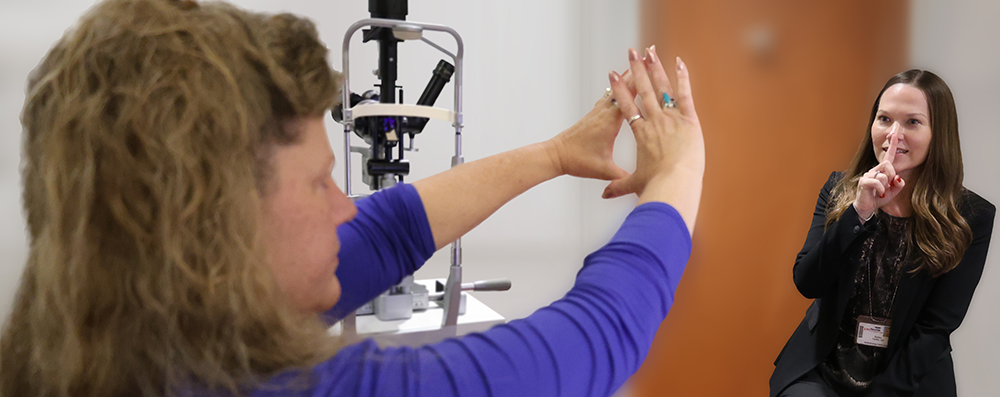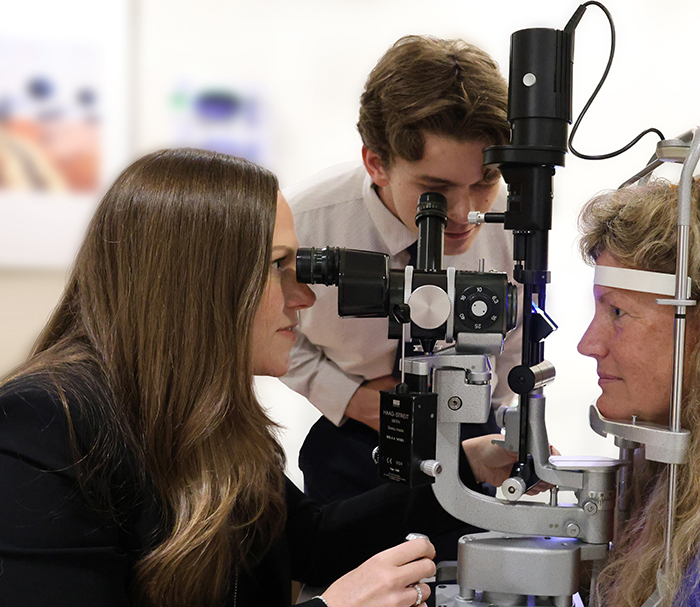
Ask Julie E. how she’s feeling these days, and she’ll tell you: her life feels like a scene out of Cinderella.
“Everything is so wonderful and great during the day, but when I take my contacts out at night, I sort of turn back into a pumpkin,” she said with a laugh. “But I’m so grateful every day that I can put these lenses in and see the world out there.”
It’s a far cry from just a few years ago, when Julie began noticing significant changes in her vision. While she had worn glasses since the third grade, her vision suddenly began getting progressively worse and made her wonder if she should be getting behind the wheel of a car.
“I was very concerned about driving at night,” she said. “I thought my regular contacts wouldn’t be able to help me anymore and I wanted to know if there was a surgery or something that could help me.”
An eye examination with her optometrist showed signs of a condition called keratoconus, which affects the shape and structure of the cornea and frequently results in blurred or distorted vision. Fortunately, her optometrist had heard about the recent FDA approval of corneal “cross-linking” – an outpatient surgical procedure aimed at strengthening the corneal tissue – and referred her to Evan Warner, MD, at the University of Wisconsin Department of Ophthalmology and Visual Sciences.
After a consultation with Dr. Warner, Julie was determined to be a good candidate for cross-linking and was able to get the procedure scheduled. However, cross-linking is only able to stop the progression of keratoconus and cannot cure the condition. But once again, Julie was in luck. She was also a perfect candidate for another treatment option: specially fitted contacts known as scleral lenses.
Sclerals are larger, more rigid contact lenses that cover the entire cornea and rest on the whites of the eyes. For patients with corneal conditions, scleral lenses can correct vision, and in conjunction with treatments like cross-linking, offer a long-term solution without having to resort to a corneal transplant.
For Julie, that first fitting for sclerals with UW Health optometrist Karina Conlin, OD, was life changing.

“I actually cried the first time I put them in because I could read what was on the paper,” Julie said. “I don’t think I had been able to see that well since I was probably about five. I was just so grateful.”
While Julie says there’s a bit of a learning curve to scleral lenses, and they require a little more work to put in, they’re more than worth it. “They make things so crystal clear every morning,” she said. Her daily routine now consists of popping in the lenses about an hour after waking up and keeping them in for the entire day – usually about 10-12 hours – before taking them out.
Some months after first being fitted with sclerals, Julie was able to undergo her corneal cross-linking procedure. Despite some minor discomfort, she said the procedure was straightforward and required only a few weeks of recovery before being able to use her lenses again.
“Dr. Warner did such a great job,” she said. “I didn’t even have to get new scleral lenses afterwards. They still fit. It was really amazing.”
Overall, Julie she’s thrilled to have found a lasting solution to her vision trouble.
“I go from being legally blind in the morning to basically having 20/20 vision when I put the lenses in,” Julie said. “It’s truly remarkable.”